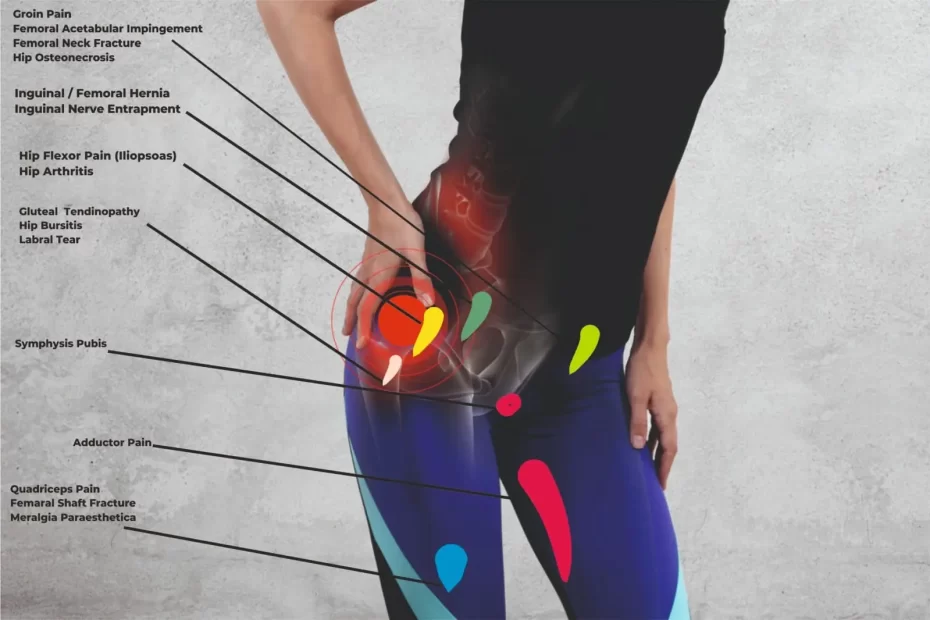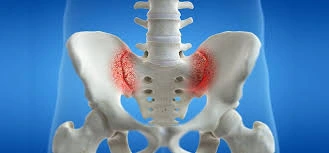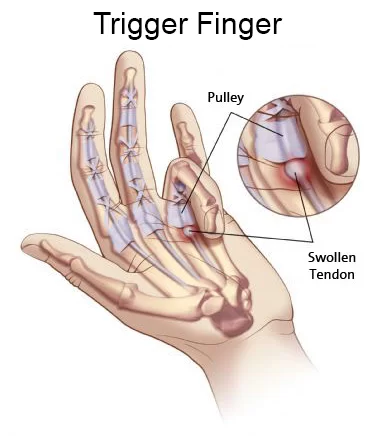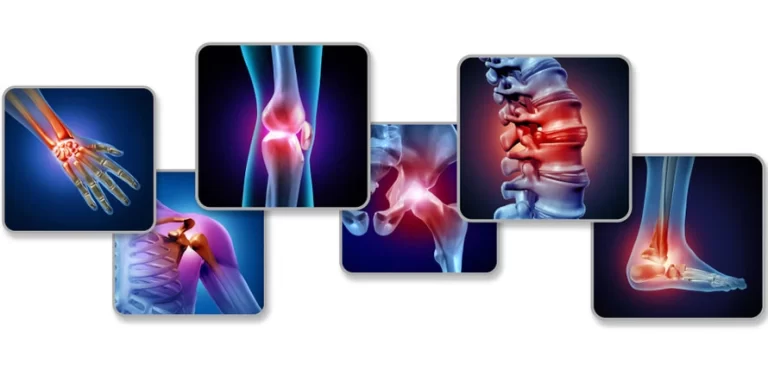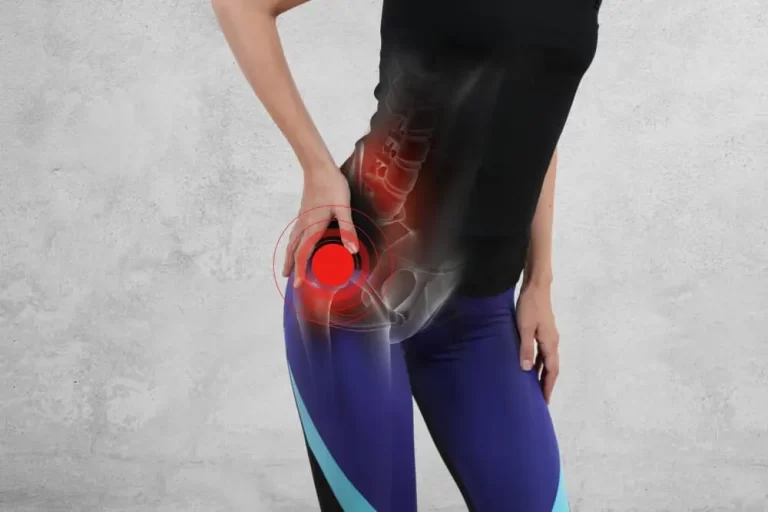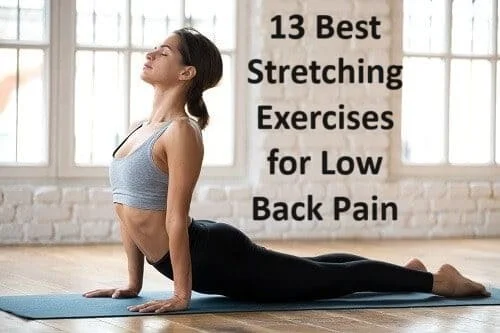Hip Pain When Walking
Introduction
Hip pain during walking is a common issue that can significantly impact daily life, mobility, and overall well-being. It can arise from various causes, ranging from temporary muscle strain to chronic conditions like arthritis or bursitis.
The hip joint, being a key component in walking, bears a substantial amount of weight and repetitive stress, making it susceptible to injury or wear over time.
Understanding the potential causes and symptoms of hip pain can help in identifying the appropriate course of action, whether through self-care, lifestyle adjustments, or seeking medical intervention.
What Is Hip Pain?
Hip pain can be anything from a little irritation that goes away quickly to a more serious problem that requires medical attention. The location of the discomfort will change depending on which part of your hip joint is affected. Hip discomfort might be experienced by you near the area above or surrounding your hip typically a problem with your ligaments, tendons, or muscles. Your hip joint discomfort may be originating from cartilage or bones further within.
In your lower back. Your lower back and groin are two other places on your body where hip discomfort can develop. The pain may come and go. For instance, hip discomfort that worsens while moving or walking may go away during rest. Furthermore, various periods of the day cause difficulty for different persons. You feel more uncomfortable when you first up in the morning. Hip pain is also frequently experienced at night, particularly if you sleep on the side of your hurting hip.
Taking a break from activities and using over-the-counter pain medications are frequent home cures for hip discomfort. See a medical expert if your hip discomfort is severe enough to restrict your range of motion or cause you to miss work or other responsibilities. Should your discomfort continue for more than a few days without improving, consult a healthcare professional.
Causes
Hip discomfort can indicate several illnesses, such as bursitis, arthritis, hip injuries fractures, rips, dislocation, and structural problems. Because dancers and gymnasts exercise hip flexion and extension in several directions, they are more likely to have hip pain and injuries.
The injury to the core muscles
Groin pain may be a core muscular injury, such as a strain or rupture of muscles or other soft tissues in the lower abdomen. This issue is especially common among weekend warriors who do sports that need a lot of intensive twisting and turning but aren’t as well-conditioned athletically.
Arthritis
Arthritis causes pain and inflammation in your joints. Hip arthritis is common. It results in discomfort, swelling, and stiffness. Osteoarthritis, Rheumatoid arthritis, Ankylosing spondylitis.
Tendinitis
The tissues that join skeletal muscle to bone are called tendons. Inflamed tendons may swell, hurt, or become irritating. Tendinitis is the name of this ailment, which often comes on by damage or abuse of the tendons a dull discomfort where the tendon and bone contact might be experienced by someone who has tendinitis.
Bursitis
Sometimes, medical professionals refer to these problems as structural abnormalities. Hip pain can occur early in childhood or later in age, depending on the specific problem you have. Ileopectineal bursitis is the more prevalent of the two kinds of hip bursitis.
Iliotibial Band Tightness
The iliotibial band and the area at the top of the shin and the lateral hip are made up of fascia fiber. Tightness from overusing the IT band can cause pain and irritation in the affected area. Bending typically results in knee discomfort, referred to as the hip.
Injuries
Pain may increase after any injury that affects the hip joint repetitive strain injuries, sports-related injuries, and traumas from falls or auto accidents mostly cause hip disorders.
Hip Flexor Strain
Hip flexor strain can be caused by injuries or strains to the muscles that connect the femur to the hip and lower back. It could be harder to raise your knee and thigh to your chest. Usually, there is a pulling sensation in the thighs and groin area and cramping or soreness in the upper leg.
Toxic Synovitis
A hip joint effect that mostly affects young people is toxic synovitis. When a person has toxic synovitis, they may have hip discomfort that spreads and gets worse when they bear weight. Rest and painkillers, including NSAIDs, are part of the therapy for toxic synovitis.
Bone Causes
Blood flow to the hip joint and other joints is restricted or stopped by avascular necrosis, also known as osteonecrosis. This illness may cause a person to have a painful or dull hip aching that may radiate to the groin.
Fracture
Hip fractures can be caused by poor activity levels, long-term medication use, and not enough bone density. Patients with hip fractures can suffer groin pain and be unable to support their weight on the injured side.
Blood flow to the hip joint and other joints is restricted or stopped by avascular necrosis, also known as osteonecrosis. This illness may cause a person to have a throbbing or dull hip aching that may radiate to the groin.
Treatments for avascular necrosis:
- Pain treatment medication, such as an NSAID
- Physical therapy
- Joint immobilization with a brace or splint
- The use of crutches
- Surgery
Osteoporosis
Osteoporosis condition causes brittle, weak bones. A person may have acute, intense hip pain that gets worse as they move.
Treatment of osteoporosis
- Weight-bearing exercise
- Increasing intake of calcium and vitamin D
- Osteoporosis treatment medication
Joint Effusion
Joints contain a small amount of fluid. Swelling can occur when a joint becomes inflamed due to arthritis, particularly inflammatory types like rheumatoid arthritis. Pain related to a joint effusion can vary in intensity, from dull to excruciating.
Treatments for joint effusion
- Physical therapy
- Fluid aspiration
- NSAIDs
- Dislocation
When a femur moves outward from the socket, it’s called a hip dislocation. To prevent further harm, medical attention should be sought and received within six hours following the accident. A person who has dislocated their hip may have a loose, unstable hip joint in addition to excruciating discomfort.
A closed reduction, in which a physician gently applies force to bring the hip into its socket, or an open reduction, in which a physician makes incisions into the joint, removes extra bone or tissue, and moves the bones, are two possible treatments for dislocation.
Osteomyelitis
A bacterial infection of the bone in the hip joint is typically the cause of hip osteomyelitis, an inflammatory bone disease. Bone becomes brittle and is lost as a result. Related muscle spasms and painful, deep pelvic and upper leg discomfort are possible symptoms. The treatment a patient receives depends on the type of osteoarthritis they have. Treatment for acute osteomyelitis involves the use of antibiotics or antifungal drugs.
Treatment for subacute or chronic osteomyelitis consists of a mix of
Antibiotics
Hyperbaric oxygen therapy
Surgery
Nerve Damage
Hip discomfort that occurs when walking may also be caused by nerve issues close to the hip joint.
Pinched Nerve
In the hip region, a pinched nerve could form. Nerve impulses can become inflamed by pressure or friction when bones, tendons, or ligaments constrict a nerve. Sharp hip, buttocks, groin, and thigh pain may be experienced, along with tingling or numbness, decreased mobility, and decreased sensation.
Treatments include
- Rest
- Stretching
- NSAIDs
- Hot and cold treatments
Sciatica
Pain resulting from sciatic nerve pain is known as sciatica. Sciatica is only a symptom, not a disease To ease their symptoms, a person should consult a physician to determine the reason for their sciatica. The biggest and most stretchable nerve gets from the buttock to the foot and is named the sciatic nerve. One may have moderate to severe discomfort in the legs, hips, and buttocks.
Treatments for sciatica include
- Exercise
- Acupuncture
- Corticosteroid injections
Sacroiliitis
Inflammation at the point where the sacral spine and pelvic bone meet is known as sacrioliitis. It typically results in discomfort that gets worse as one stands or walks.
Treatments for sacroiliitis include
Rest
Hot and cold treatments
Pain treatment medication, such as NSAIDs
Corticosteroid injection.
Symptoms of Hip Pain When Walking
- Joint swelling
- Pain in the joint
- Visible deformity
- Spasms over the thigh and buttocks
- Bruising
- Difficulty moving the leg
- Tingling
- Numbness
- Muscle weakness
- Difficulty walking
- When standing, the injured hip cannot support weight.
- The diagnosed hip’s side leg may seem shorter and twisted inward or outward.
Differential Diagnosis
- Femoroacetabular Impingement: hip range of motion pain, gradual onset, developmental deformity or slipped capital femoral epiphysis history, and a positive FABER test result in a young, athletic patient
- Avascular necrosis: middle-aged or older with metabolic syndrome. Hemoglobinopathies, chemotherapy, alcoholism, smoking, systemic corticosteroid usage, and obesity.
- Moderate hip flexion and internal rotation 15° less than the side that is not painful, morning stiffness lasting less than an hour after waking, and/or increased hip pain related to
- Hip fractures are caused by osteoporosis, aging, trauma or falls, reduced limb function, and an abducted, shortened leg.
- Greater trochanteric pain syndrome symptoms include no injuries, middle age, female sex, obesity, discomfort while sleeping on the injured hip, pain that gets worse when moving or sitting for extended periods, and palpable soreness. Trendelenburg gait, positive Trendelenburg test, positive resisted external derotation test, over the lateral hip/greater trochanter.
- Deep gluteal syndrome: sciatica (a searing pain that shoots down the leg) and deep buttock discomfort without an injury that gets worse while sitting, especially in a car.
- Ischiofemoral impingement: Deep buttock pain that progressively increases when practicing distant physical activity like running.
- Pain in the sacrospina: No past medical history of back pain, no soreness above the sacroiliac joint, and no soreness over the fifth ligament.
- Pain in hamstring strength testing, pain in area the of ischial tuberosity, overuse injury with hip extension activities (acute injury with forceful hip extension), or proximal hamstring tendinopathy or tear.
How is Hip Pain When Walking Diagnosed?
A few tests and scans will often allow your doctor to determine the reason for your hip discomfort. You may also require the services of a physiotherapist, an immunologist, or an orthopedic surgeon, depending on your needs. your doctor asked you a few questions as below,
- Medical history – Your doctor can use this information to determine whether you have any chronic health conditions or if you have joint pain or swelling in other areas of your body.
- Physical examination: This test might assist in identifying any swelling or injury to your hip joint.
- Blood test: This laboratory test looks for infections as well as autoimmune conditions like lupus and rheumatoid arthritis.
- X-ray – This diagnostic procedure can be used to find hip, groin, and lower back fractures or other bone injuries.
- An MRI scan is a diagnostic process used to look for damage or injury to the hip’s muscles, ligaments, and tendons.
- Hip joint mobility is determined by a type of physical examination called the Patrick test.
- Test of gait – This assessment looks at how your legs and hips move while you walk.
Medical Treatment
Injections, hip arthroscopy, physical therapy, hip arthroscopy procedures hip arthroscopy, anesthesia, and post-operative equipment. surgery like Internal repair using screws, Total hip replacement, or Partial hip replacement.
Medications for hip pain
Your doctor could advise using medication to manage your hip pain and any other symptoms. Most people can tolerate acetaminophen and over-the-counter NSAIDs including naproxen, aspirin, and ibuprofen. Consult your physician before using these drugs for longer than ten days straight.
Physical Therapy for Hip Pain
If you have a problem or other physical issue that gives you pain, your doctor suggests physiotherapy. A physical therapist will teach you stretches and exercises to strengthen the muscles around your damaged hip. This should improve your stability and aid with pain relief.
Physiotherapists use a variety of modalities to treat hip pain, including:
- Exercise therapy – A personalized exercise program can help improve flexibility, strength, and balance. Exercises can include leg extensions, hip abductions, bridges, and clamshells.
- Manual therapy – Hands-on techniques like joint mobilization, soft tissue manipulation, and stretching can help reduce tension and pain.
- Electrotherapy – Electrical stimulation techniques like ultrasound, TENS, and shockwave therapy can help reduce pain and inflammation.
- Heat and cold therapy – Warm packs or baths can promote blood flow and relax muscles, while ice packs can reduce swelling.
- Education – Physiotherapists can provide advice on how to prevent further injury, such as proper posture, lifting techniques, and exercises that can be done at home.
- Hydrotherapy – The buoyancy and reduced gravity of water can help patients with trouble bearing weight due to hip pain.
- Laser therapy – MLS (multiwave locked system) laser therapy can reduce inflammation and soft tissue damage, which can help reduce discomfort and promote easier movement.
1. Knee to chest

- If you have a problem or other physical issues that can give you pain, your doctor suggests physiotherapy
- One leg bending to the chest, left leg straight. On the floor, extend your lower limb in the supine position.
- Pull the knee into the chest, with both hands.
- Do this exercise on both knees between five and ten times.
2. External Hip Rotation

- Your legs must extend in front of you when you are on the ground.
- Bend your legs at the knees and plant the soles of your feet hard together push both knees down towards the floor with a hand on top of each. Apply pressure until the knees extend rather than making them past their comfort level. Hold the stretch for 10 seconds after releasing it.
3. Double Hip Rotation
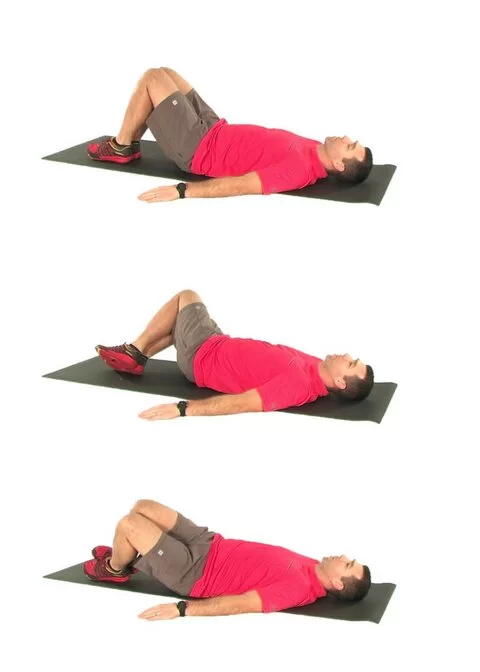
- Lie flat on the back.
- Bend your knees with one leg straight
- rotate them both leg left to right.
- Rotate to the right while holding onto your shoulders tightly.
- 20 to 30 seconds, maintain this position.
- Return to the starting position by carefully moving the head and legs.
4. Hip and Lower Back Stretch
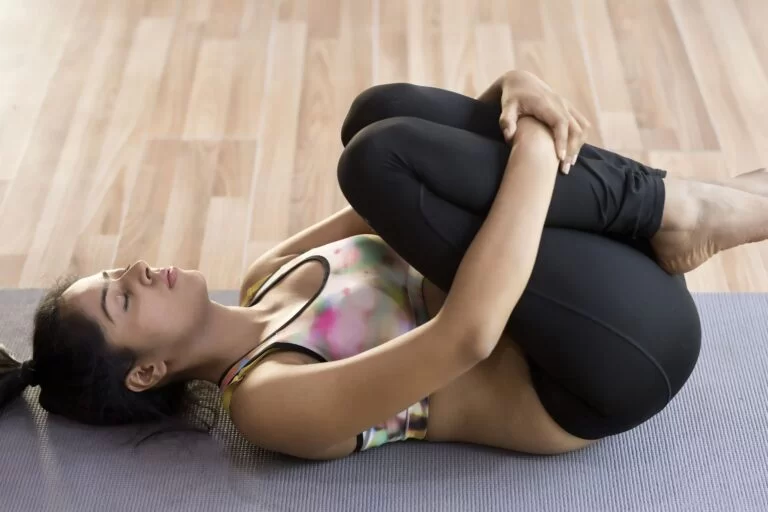
- Lower back and hip Extend
- Your feet must be parallel to the floor, now bend your knees inward to maintain your back flat on the ground.
- Your hands grabbing to your chest and with your hands on your knees.
- Raise your legs to your shoulders as you exhale a long, calm breath.
5. Hip Flexion
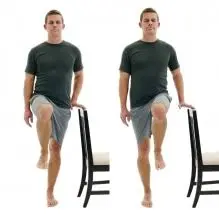
- Stand upright.
- Need support of wall, table, or chair.
- Raise the right knee progressively to hip level, or higher if comfortable, while keeping the left leg straight.
- Only after a few seconds of maintaining this stance should the left foot be back on the ground.
6. Hip Extension
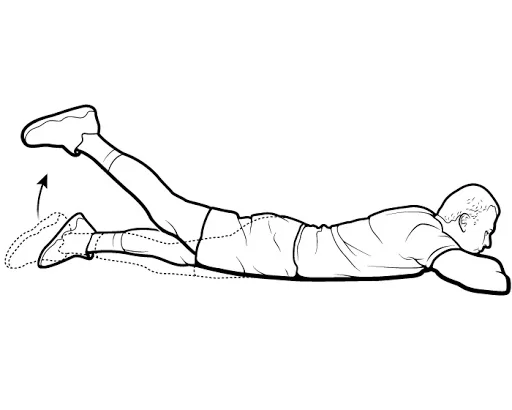
With your arms out in front of you, grab a chair, table, or wall for support. Bend your right leg and maintain straight. Crush your buttocks and hold them there for five seconds after stretching the leg as far as it can go without causing pain.
7. Hip Abduction
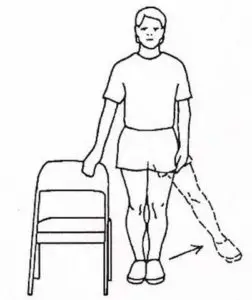
left arm grabs something, such as a wall, chair, or table. with the feet together, lift the right leg to the right side Avoid twisting your hips and maintain a straight left leg. Carefully put the leg back in its starting position after holding it for five seconds. five to ten times reps for this movement, after moving forward for another exercise.
8. Heel-To-Buttock
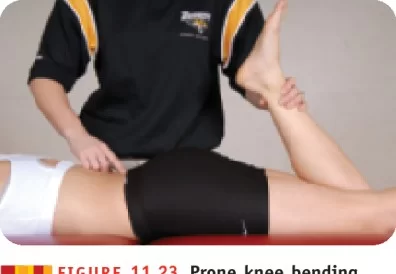
With your knees straight, lie on your stomach. To support your forehead, use the backs of your hands. As much as you can without having pain, bend your knee. Go to the starting position slowly. As instructed, repeat 5 to 10 times.
9. Mini Squat
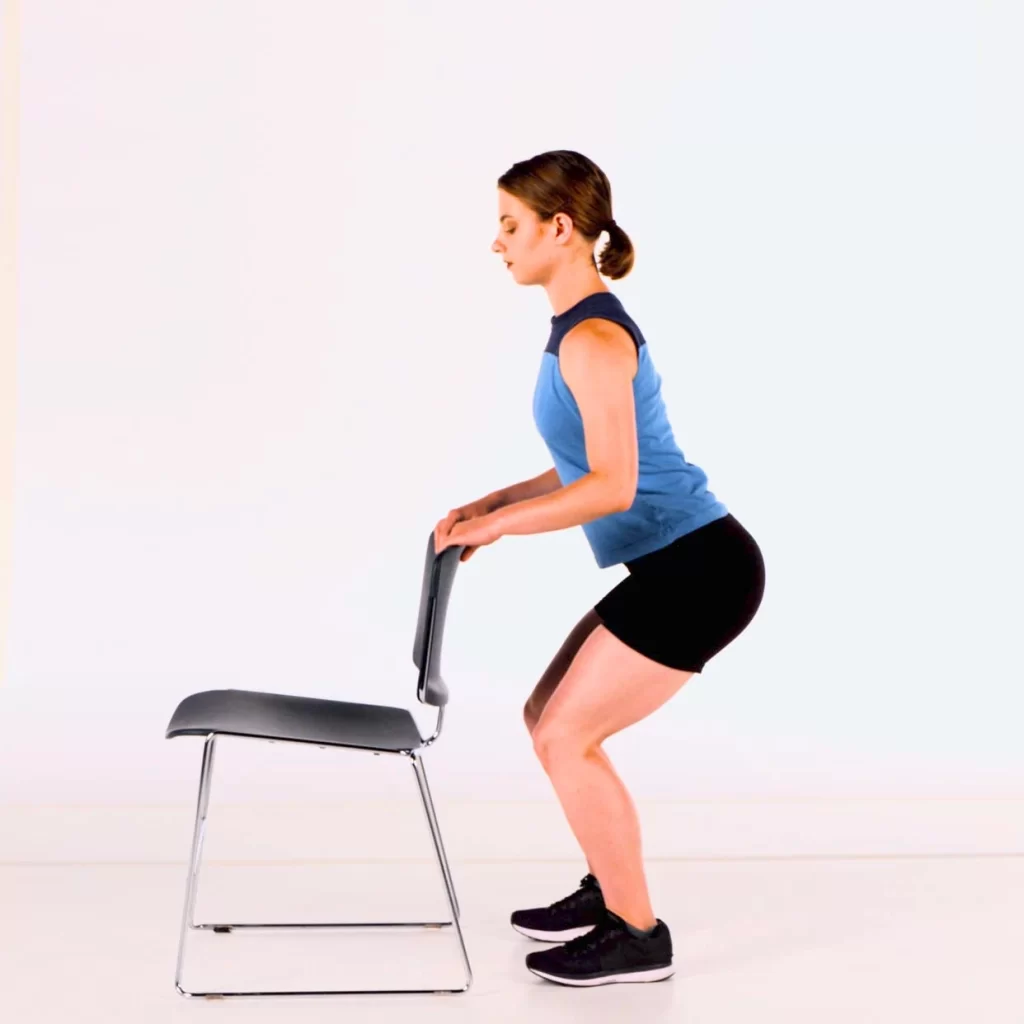
- Stand upright with the feet shoulder-width apart.
- For support, grab onto a wall, table, or chair.
- Bend your knees till they are over your toes rather than your back. This will slowly go down the body. The feet must remain in line with the floor.
- After a little period, return to your starting posture by keeping your legs outstretched.
10. Static Quadriceps Exercise
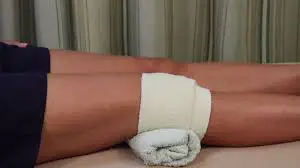
- Lay flat on your back with a cushion or towel folded up under your right knee.
- Sliding the left foot back towards the buttocks will bend the knee.
- Keep the back of your right knee against a cushion or towel while you slowly raise your right foot off the floor.
- After five seconds of holding the stance, slowly return the right leg to its initial position.
- Before going on to the second leg, perform five to ten leg lifts.
11. Ankle Pumps
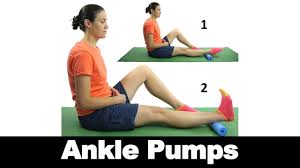
- Throughout the exercise.
- While lifting your legs, keep a flat back.
- While pressing the backs of both knees into the floor to flex them, pull both feet towards the upper torso.
- Relax
12. Bridging
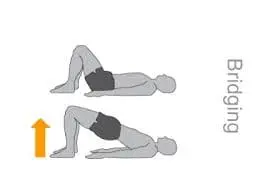
- If support is required, a little cushion below the head and neck.
- Slowly lift the pelvis and lower back upward. Keep your shoulders and upper body stable. Hold the pose for five seconds.
- Lower the pelvis slowly to the ground, starting at the top of the spine. To level the back, roll the spine across the floor again.
13. Chair Squats

- The chair’s back should be against the wall in this posture.
- Sitting on the front part of the seat, bend your knees and keep your feet flat on the ground. Put one hand on either side of the opposite shoulder while crossing your arms.
- Make sure you are sitting properly.
- Lean your upper body forward once more, and then slowly raise yourself. As you do this, maintain a straight back, shoulders, and head.
- Slowly take a seat again and assume your starting posture. Start by performing this exercise 4-6 times, then progressively increase the repetitions.
Care and Treatment
How is a Hip Pain Treatment
- Rest: To prevent aggravating your injury, cease any physical activity causing discomfort.
- Ice: Use an ice pack or cold compress for ten to fifteen minutes every hour for the first twenty-four hours after your injury. After the first day, you can apply ice every three to four hours. Cover the ice pack with a towel or washcloth instead of placing it directly on your skin.
- Compression: Compression reduces blood flow to the injured hip and reduces edema. Cover your hips with a compression bandage. You can also put on compression shorts or pants to maintain pressure on your hip.
- If you can, raise your hips and lower your body so swelling decreases
Ways To Prevent Hip Pain When Walking
Walking-related hip discomfort is a prevalent condition with a number of associated causes. It may not be preventable if linked to a chronic illness like arthritis or osteoporosis Stretching, posture correction, and weight control can help people avoid hip discomfort if it results from poor sitting posture or inactivity.
- Wear the right protective equipment. Give your body time to rest and recover after strenuous activity. Stretch and warm up before playing sports or doing any physical activity. Cool down and stretch after physical activity. The following general safety precautions can help lower your risk of injury
- Ensure that nothing might trip you or others in your house or business. Never stand on chairs, tables, or countertops. Use a cane or walker. Use a cane or walker if you have difficulty walking or are prone to falling.
When To See A Doctor
The patient should consult a doctor if the hip pain is severe or getting worse if it has continued for longer than two days, or if there has been an injury or fall. In addition, medical attention should be sought if a person’s pain prevents them from carrying out routine activities like upward stairs.
How Can I Prevent Hip Pain?
It may not always be possible to prevent hip discomfort, especially if it is brought on by an unintentional injury or an issue with the structure of your hip joint. During sports or other physical activities.
- If hip pain after or during stop physical activity
- After a strenuous workout, give your body time to relax and recover.
- Warm up and stretch before playing sports or doing any other physical activity.
- After working out, cool down and stretch.
- To lower your chance of getting hurt, follow this general safety advice.
- Ensure that nothing might trip you or others in your house or business. It is important to always utilize the proper tools or equipment while reaching for anything at home. Avoid standing on worktops, tables, or chairs. Use a walker or cane if you have difficulty walking or are prone to falling.
Conclusion
Hip pain while walking can result from various causes, including muscle strain, arthritis, or overuse. Rest, ice, stretching, and supportive footwear often provide relief, but persistent or severe pain may require medical attention. Early intervention and targeted care can help restore mobility and prevent further discomfort.
FAQs
Should I keep walking with hip pain?
Going for frequent walks can help you, no matter what is causing the discomfort in your hip. This is true for several reasons. First, the muscles surrounding the hips remain flexible and strong with regular activity This will assist in reducing any potential swelling around an injured joint.
How quickly can hip pain be relieved?
Hip pain can be effectively managed with rest, application of ice or heat to the affected area, strengthening and stretching exercises, and use of over-the-counter medications such as ibuprofen or acetaminophen.
How can you determine whether a hip discomfort is severe?
You had a significant accident, such as a fall, that is causing your hip discomfort. Your limb is bleeding, severely injured, or malformed. Your affected hip is not moving or able to tolerate tension on your leg.
How do you stop hip pain fast?
Hip pain can be effectively relieved by resting, administering ice or heat to the affected area, stretching and strengthening exercises, utilizing over-the-counter drugs such as acetaminophen or ibuprofen, and wearing supportive shoes.
Will hip pain go away on its own?
Ibuprofen, paracetamol, and rest, help hip pain. See your doctor if it is still uncomfortable even after resting your hip at home for a week.

